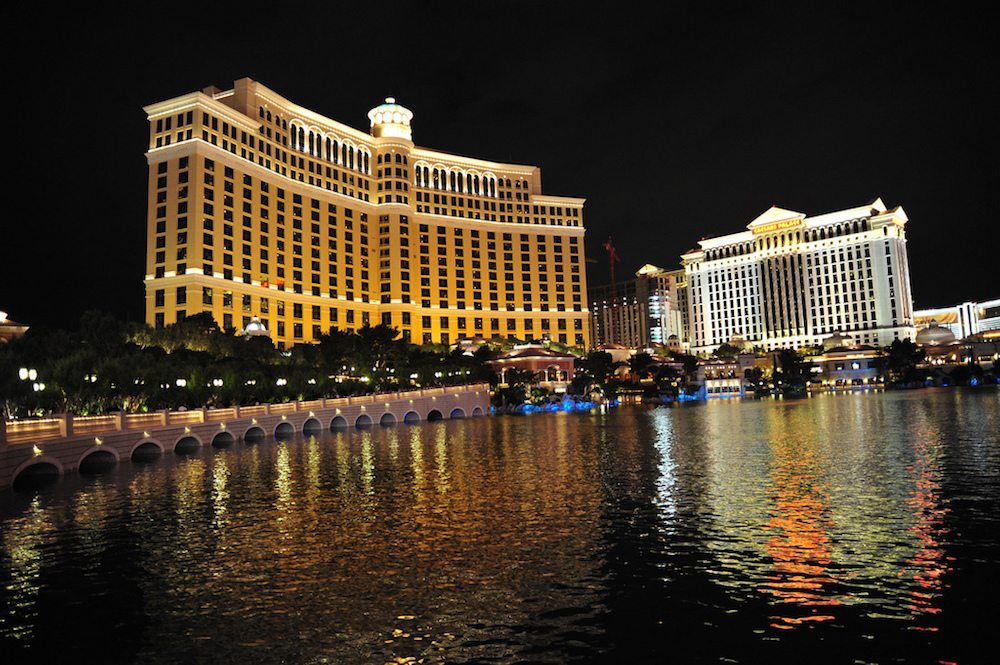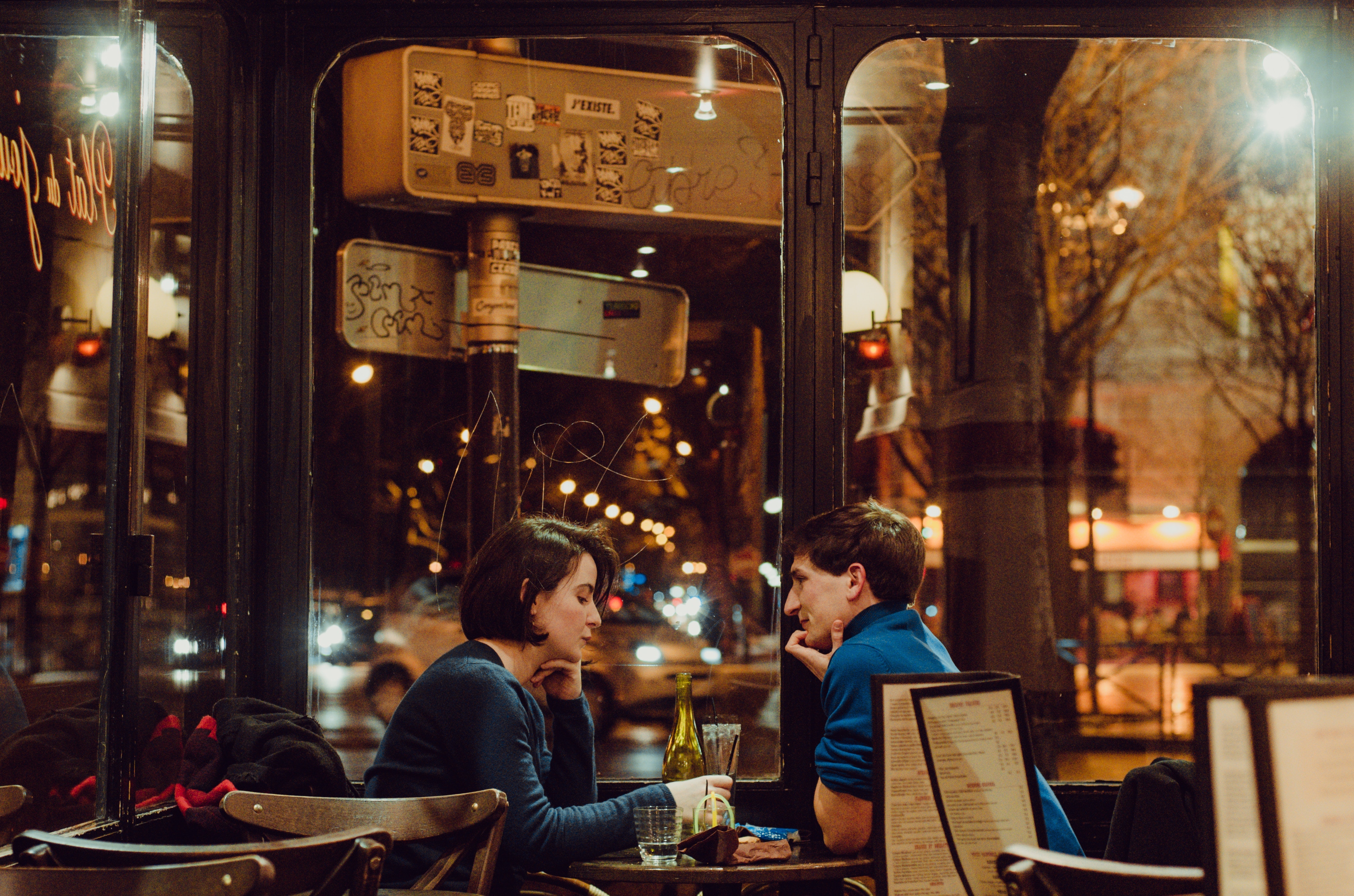Somewhere between the beginning of Bill Clinton’s first term and the start of the Great Recession, big-name chefs and hoteliers had a very expensive fling. Hotel operators paid princely sums to adorn their lobbies with chef-branded eateries, fueling the rise of an international trend. The perks used to lure culinary talent had been unheard of in the world of standalone restaurants: $1 annual rent, free custom build-outs, six-figure licensing fees. Chefs took home huge lumps of cash, and the hotel industry hoped every penny would be worth it.
It was a spending frenzy, one that makes sense only when you understand this: hotel restaurants are the bane of every hotelier’s existence. They’re a pain in the ass, and they don’t make any money. Why? Because hotel dining programs—what industry people call “food and bev”—aren’t really about food in the first place. They’re an amenity. And the perks offered to coddle guests—extended hours, daily breakfast, and room service—make no financial sense. In major cities, most food and bev programs operate at a loss.
Enter the big-name chef.
In the beginning, the hope was that familiar (if not yet household) names like Mario Batali and Wolfgang Puck could revamp floundering hotel restaurants and Make Them Great Again. But chefs didn’t necessarily even need to take restaurants into the black because of the ancillary benefits: culinary star power, even today, has the potential to juice a hotel’s fundamentals, driving occupancy, justifying rate increases, and attracting free marketing in the form of good press. Since they were already losing money on every meal, hotel industry folks felt they might as well hire someone whose mere presence made the lodging business—always the more lucrative endeavor anyway—even more attractive and profitable. And they were willing to pay for it.
From the start, it was a marriage of convenience. And the honeymoon, it’s safe to say, is over.
In the early 1990s, Vegas casinos started hiring chefs to revamp their restaurants. Charlie Trotter pioneered the famous “5 for 15” deal with the MGM Grand, even though his restaurant closed fifteen months later.
Every bust starts with a boom, and this one first exploded in Las Vegas in the early 1990s.
As part of a larger effort to turn Sin City into a more family-friendly destination—something bigger and brighter than gambling—hotel and casino operators used chef-branded restaurants to attract guests and lend an air of all-ages cachet. In 1992, Wolfgang Puck sparked a culinary arms race by opening Spago, named for its Beverly Hills counterpart, in Caesar’s Palace. Before long, chefs like Bobby Flay, Thomas Keller, and Daniel Boulud were signing licensing agreements with hotels and casinos up and down the strip.
Arguably the most influential deal took place in 1993, at the MGM Grand Hotel & Casino, and by the seat of its pants.
According to consultant and restaurateur Adam Block, people at the MGM Grand thought a world-class restaurant, helmed by a star, would keep high-rollers on the premises longer, and make them less likely to take themselves (and their pocketbooks) elsewhere on Las Vegas Boulevard. Ultimately, they hired Charlie Trotter, who’d won international raves with his eponymous spot in Chicago’s Lincoln Park.
“Charlie was the young buck, all-American restaurateur in 1993,” Block says. “He was the closest thing to an American Michelin-star chef.”
Trotter’s father had always handled his business deals, but because he’d recently died, the chef had no one to negotiate for him. So he brought in Block, who then worked as a restaurant consultant. Block had never worked on a licensing contract before. He faked his way through the talks.
“I was grabbing numbers out of thin air,” Block says. “I honestly did not know what I was doing. I thought: I’ll ask for the world.”
Many of the celebrity chef hotel restaurants have closed since the early 1990s. The Wolfgang Puck cafe in Disneyworld is an exception.
Block’s cluelessness ultimately benefitted Trotter, because Block scored his client a very good deal. For every dollar of revenue the restaurant brought in, MGM paid Trotter a management fee of 5 percent. Then, there was the “subordinated incentive” fee: another 15 percent of the restaurant’s gross profits, which Block structured with a buyout clause so that MGM would continue paying a commensurate amount if the restaurant closed before ten years. (Actually, it closed in fifteen months.) On top of that was a $200,000 development fee, a lump sum paid up front to Trotter. Oh, and MGM paid for the entire build-out, too—$3.5 million dollars, which sounds like a commonplace figure now, but was basically unheard of then. Trotter didn’t have to pay a penny. He didn’t even have a lease.
This dream arrangement, which became known in Vegas as the “5 and 15 deal,” helped to usher in a heady era of six-figure licensing contracts and set the template for deals that followed.
All this, for a restaurant that closed in just 15 months. That’s how long it took for the MGM to realize that Charlie Trotter’s restaurant wasn’t going to work. The people the casino had hoped to attract didn’t have time for a multiple-course tasting menu. According to Block, MGM realized too late that the highest rollers never want to leave the gambling floor. So they closed the restaurant and kept paying Trotter’s salary for almost ten years. Still, it was an important early step in what became the next big trend in Vegas: luring families with a luxurious, resort-like dining experience. And, for a while, that only confirmed the need for great chefs.
The problem was that, eventually, chefs and restaurateurs came to realize what hoteliers already knew: running a hotel restaurant is brutally tough work. From a distance, a hotel gig might seem like the deal of a lifetime. Viewed up close, it can look more like a house of cards.
The Strip in Las Vegas played host to the first wave of celebrity chef hotel restaurants.
The great thing for a chef or restaurateur about working with a hotel is that the relationship provides something almost impossible to find elsewhere: a landlord who’s directly invested in the restaurant’s success, and extremely motivated for things to work out. But with two businesses under one roof, it’s twice as easy for thing to go wrong.

Here’s how an independently-operated hotel restaurant typically fails: the hotelier is so eager to turn around his struggling food and bev program that he offers a hot new chef or restaurateur the sun, moon, and stars. The chef is excited to open up shop in a grand building with a great location, and he gets dollar signs in his eyes. Everyone’s excited. No one does their homework.
“Many of the independent restaurant operators enter into these agreements not realizing some of the realities,” says Bjorn Hanson, a professor at NYU’s Tisch Center for Hospitality and Tourism. “There’s a fairly high percentage of cases where the restaurateur comes back to the hotel owner or operator and says, ‘This isn’t working—I need to back out from the agreement. I’ll walk from it, maybe even pay penalties.’ Or, ‘We need to renegotiate the terms, if you really need me to stay here.’”
A hotel’s relationship with its restaurant can go south any number of other ways. But according to Hanson, hours of operation are often where the trouble starts. Typically, freestanding restaurants close on certain days, or for certain meals, to avoid as many slow shifts as possible. The hotelier, on the other hand, usually expects full service. After all, a hotel’s restaurant is a guest amenity. And that means serving food three meals a day, seven days a week.
“The operator may say, ‘Well, there isn’t enough volume at breakfast,’ or ‘Monday nights are really slow,’” Hanson says, “But the hotel manager will say, ‘Well, I can’t tell a guest checking into the hotel, ‘Sorry we don’t serve on Mondays.’”
“Breakfast is not something that restaurateurs typically like to do. In fact, they’re not even awake during breakfast, most of them,” says David McMillan, president of AXIS Hospitality International, a company that consults on hotel projects worldwide. That’s not just because it means getting up early. Breakfast is the cheapest, most unglamorous meal of the day—meaning it gains less revenue for the restaurant, and fewer tips for service staff. For the hotelier, though, breakfast and brunch are seen as crucial—frequently the day’s biggest draw, an opportunity to “capture” guests before they venture out.
I’ve worked on about 3,000 hotel projects, and I haven’t come across one in the United States that had a profitable room service department
Then there’s the expectation to provide room service, a chore chefs tend to hate. “The food is subject to the heat or the cold or whatever else, and then you have a five-star guest sitting on the bed eating off a trolley,” McMillan says. “That’s not really an experience that someone like Bobby Flay is going to put his name to.” It also adds a whole layer of logistical complexity—special platings, and server time lost delivering and retrieving meal trays. “I’ve worked on about 3,000 hotel projects, and I haven’t come across one in the United States that had a profitable room service department,” Hanson says.
Add to that the fact that, in major U.S. cities, many of the largest and most upscale hotels—the kinds of places that can attract major chefs in the first place—are governed by collective bargaining agreements, which also cover any restaurants within the building. On the inside, a hotel restaurant might ostensibly look like any normal restaurant, but union rules create a completely different economic and operational reality. In New York City, for instance, union dishwashers must be paid $26.36 an hour, and union servers start at $13 before tips. McMillan estimates that, in the unionized scenario, labor eats up 50% of total food and bev revenue—compared to only 20% for a non-unionized hotel. It also usually means that staff have their roles clearly defined by law. A server, for instance, may not be allowed to bus a table.
All these restrictions mean that even though a hotel restaurant looks like an independently-run restaurant, it’s really a completely different kind of business. And it’s not typically a setting where chefs—even the best chefs—know how, or even care to, succeed.
“A hotel has very specific food and business needs,” says Jody Pennette, founder and CEO of cb5, a New York-based hospitality consulting firm. “Just because a guy’s got a hot restaurant on the street, putting him in a hotel is not a natural extension of that.”
Sometimes, style and temperament are in conflict. Restaurant and hotel people are used to working very differently, so they tend to have different personalities—and that can mean forcing two very different businesses to cooperate.
“A lot of restaurant chefs, they come upstairs from their office at 4 o’clock with a crumpled piece of paper in their top pocket, and they call a friend at the fish place and they order a fish for special for the weekend,” Pennette says. “In a hotel that won’t fly. You have receiving. You have purchasing departments. You have standards. The infrastructure of hotel food and beverage is rather rigid, and for good reason. But restaurant guys are typically not good with economics. They’re artists. It’s like an independent filmmaker going to work for a big production studio.”
Pannette makes a comparison that nicely sums up why things don’t work out:
“It’s like having two roommates, and one’s a student and other guy’s a Hell’s Angel.”

Yes, hotel restaurants are demanding, and they require a cultural shift from kitchen people. But chefs also deserve part of the blame: they were willing to take the money, even if they didn’t necessarily want the job. As the most successful of them rushed to take advantage of licensing deals—what Hanson calls an “explosion” of high-dollar-figure agreements with hotels—many quickly became overextended.
“They would go wherever they thought they could get their management fee, wherever they could put their brand on the door,” Block says. “It was such a short-term, myopic approach because it hurt their brand, and they didn’t have the people to support it, and as the customers would come in with their arms folded saying ‘show me your greatness’ and they didn’t get it, they were highly disappointed.”
Gradually, hoteliers started to realize that big-name chefs weren’t worth the huge sums they were commanding. It was a slow, painful breakup, but it was clear the end was near.
“The chef is just never in the hotel. Never in the restaurant. Doesn’t bring dollars to the bottom line. Doesn’t add value to the guest—in fact frustrates the hotel guests. It ends up becoming a liability to [the owners] because they’re subsidizing this restaurant,” Block says.
Pennette agrees: “We’ve all figured out that Mario Batali isn’t going to show up at the Cleveland Marriot and cook. So once that fantasy fades, what’s the point?”
The hoteliers—they’re going for the low-hanging fruit that they think they need for a launch. They’re not thinking past a year, they really aren’t.
That’s not to say hotels and big-name chefs are getting divorced completely. But they’re going into these marriages with their eyes open. And for hotel developers, whose concerns have to do with real estate value, restaurants don’t need to be a profit center. The mere presence of a big-name chef in a new building can help to justify higher rent to other tenants, and all that dough for the build-out can just be booked as a “tenant improvement”—all of which can help drive up the valuation when a developer flips a project or refinances.
“They’re often not as caring about the long-term play themselves, the hoteliers,” Block says. “They’re not thinking past a year, they really aren’t.”
That way, if the restaurant fails once the building opens—like Charlie Trotter’s first Vegas restaurant did all those years ago—they will have already gotten their money’s worth.














